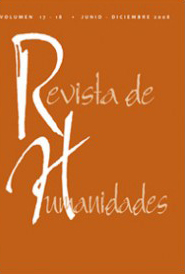El Tiempo en las Confesiones de San Agustín
Palabras clave:
tiempo, eternidad, movimiento, Dios, espíritu, San AgustínResumen
En el libro XI de las Confesiones de San Agustín se encuentra uno de los tratamientos fi losófi cos clásicos del tiempo. El obispo de Hipona hace una caracterización claramente contraintuitiva del mismo, sosteniendo la inexistencia real y solamente mental de pasado y futuro, y real sólo del presente. El tiempo es medida del movimiento. Es, asimismo, obra de Dios y surge con la creación, no la antecede, por lo que Dios es anterior al tiempo, aunque no en sentido cronológico
Descargas
Referencias
Sagrada Biblia. Trad. de Nácar-Colunga. Madrid: Biblioteca de Autores Cristianos,1991.
Pentateuco. Edición bilingüe castellano-latín de la Facultad de Teología de la Universidad de Navarra. Pamplona: Eunsa, 1997.
Agustín de Hipona. Ciudad de Dios. Edición bilingüe, traducción de José Morán O.S.A. Madrid: Biblioteca de Autores Cristianos, 1964.
Agustín de Hipona. Confesiones. Trad. de José Cosgaya, O.S.A. Madrid: Biblioteca de Autores Cristianos, 1997.
Agustín de Hipona. Confesiones (edición bilingüe). Trad. de Ángel Vega. O.S.A. Madrid: Biblioteca de Autores Cristianos, 1968.
Knuuttila, Simo. “Time and Creation in Augustine”. The Cambridge Companion to Augustine. Ed. Norman Kretzmann y Eleonore Stump. Cambridge: Cambridge University Press, 2001.
Teske, Roland. “Augustine’s theory of soul”. The Cambridge Companion to Augustine. Ed. Norman Kretzmann y Eleonore Stump. Cambridge: Cambridge University Press, 2001.
Turetzky, Philip. Time. London and New York: Routledge, 1998.
Vaught, Carl. Metaphor, Analogy, and the Place of Places: Where Religion and Philosophy Meet. Waco: Baylor University Press, 2004.
Descargas
Publicado
Número
Sección
Licencia
Derechos de autor 2022 Revista de humanidades (Santiago. En línea)

Esta obra está bajo una licencia internacional Creative Commons Atribución-NoComercial-SinDerivadas 4.0.
You are free to:
- Share — copy and redistribute the material in any medium or format for any purpose, even commercially.
- Adapt — remix, transform, and build upon the material for any purpose, even commercially.
- The licensor cannot revoke these freedoms as long as you follow the license terms.
Under the following terms:
- Attribution — You must give appropriate credit , provide a link to the license, and indicate if changes were made . You may do so in any reasonable manner, but not in any way that suggests the licensor endorses you or your use.
- No additional restrictions — You may not apply legal terms or technological measures that legally restrict others from doing anything the license permits.
Notices:
You do not have to comply with the license for elements of the material in the public domain or where your use is permitted by an applicable exception or limitation .
No warranties are given. The license may not give you all of the permissions necessary for your intended use. For example, other rights such as publicity, privacy, or moral rights may limit how you use the material.













